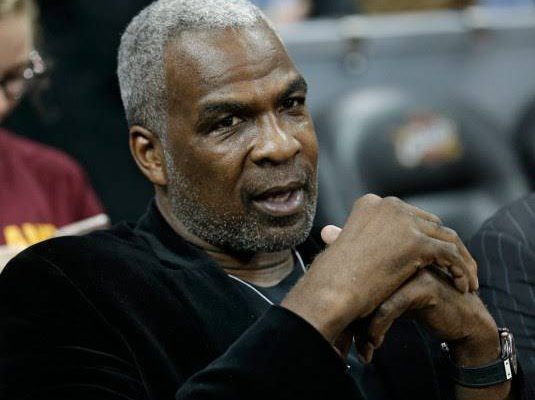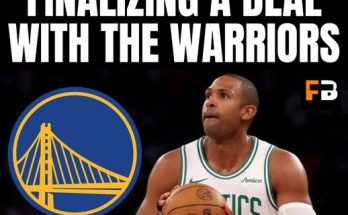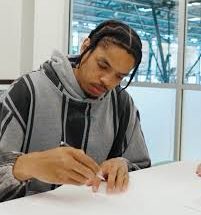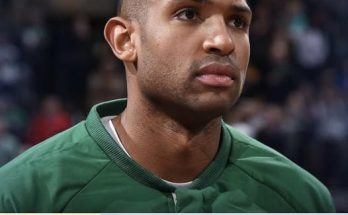Excitement hit an all-time high at Madison Square Garden this week, and it wasn’t because of a buzzer-beater or a blockbuster trade. In a surprising yet deeply nostalgic move, the New York Knicks have officially brought back one of the most iconic figures in franchise history—Charles Oakley. The hard-nosed enforcer, fan favorite, and embodiment of 90s Knicks grit has returned to his former team, not as a player, but as part of the senior coaching staff. The news sent shockwaves throughout the basketball world, with fans, analysts, and former players all reacting to the unexpected reunion between Oakley and the Knicks organization. What makes this moment so extraordinary isn’t just that Oakley is returning to the bench in a professional capacity—it’s that the move symbolizes reconciliation, renewed trust, and a pivotal step forward for a franchise often plagued by internal strife and misaligned identities.
To understand the gravity of this development, one must first revisit Oakley’s complicated history with the Knicks, a tale filled with love, drama, conflict, and now, apparent resolution. Oakley was a cornerstone of the Knicks’ identity during the 1990s, a decade when Madison Square Garden was both a fortress and a coliseum. Known for his rugged defense, rebounding prowess, and unrelenting toughness, Oakley wasn’t just a player—he was a tone-setter. Playing alongside Patrick Ewing, John Starks, and Anthony Mason, Oakley helped define the physical and fearless brand of basketball that came to symbolize the Knicks during that era. While he didn’t average flashy numbers, his impact was undeniable. Opposing stars knew that entering the paint meant absorbing punishment from Oakley. He embodied New York’s blue-collar ethos, and fans adored him for it.
But that once-strong bond between Oakley and the Knicks soured in recent years, most publicly in 2017 when he was ejected and subsequently arrested during a game at Madison Square Garden. The incident, which saw Oakley forcibly removed by security and later charged with trespassing and assault (charges that were eventually dismissed), became a PR nightmare for the Knicks and a source of outrage for fans. Oakley claimed he was unfairly targeted by team owner James Dolan, who he felt resented his outspokenness. The altercation ignited a firestorm of criticism and strained the relationship between Oakley and the franchise even further. It seemed, at the time, like an irreparable rift.
Fast forward to today, and that seemingly broken bridge has not only been mended but transformed into a new professional alliance. Oakley’s return as a senior coaching staff member signifies far more than just a basketball decision—it’s a powerful gesture of healing and maturity. For the Knicks, an organization long criticized for its dysfunctional leadership and alienation of former greats, this is an opportunity to rebuild goodwill, not just with fans but with its own history. For Oakley, it’s a moment of vindication, reflection, and a chance to impart his old-school wisdom to a new generation of players.
From a coaching standpoint, the implications of Oakley’s return are incredibly compelling. While he lacks formal NBA coaching experience, Oakley has long been viewed as a basketball savant in the areas of defense, effort, and accountability—traits sorely needed in today’s league. The Knicks, who have hovered around mediocrity for the better part of two decades, have made modest gains in recent seasons but continue to struggle with consistency and identity. The addition of Oakley to the coaching staff signals a philosophical shift. His presence alone sends a clear message: toughness, discipline, and team-first mentality will be non-negotiable standards moving forward.
Oakley’s impact is expected to be particularly strong among the Knicks’ big men and young core. Players like Mitchell Robinson, Isaiah Hartenstein, and even newcomers like Jericho Sims stand to benefit immensely from Oakley’s guidance. Rebounding technique, defensive positioning, and mental tenacity are areas Oakley mastered during his playing days. His mentorship can provide the kind of intangible edge that analytics often fail to capture but that championship teams invariably possess. Moreover, Oakley’s return may serve as a morale booster. His credibility as a player and deep-rooted passion for the Knicks could inspire greater locker-room cohesion and an elevated sense of purpose.
There’s also an educational layer to this story that resonates deeply with sports culture at large. Oakley’s journey back to the Knicks underscores the importance of second chances, forgiveness, and organizational self-awareness. Too often in professional sports, personal egos and bureaucratic politics override common sense and prevent reconciliation. In this case, both Oakley and the Knicks demonstrated growth by putting the past behind them for the betterment of the future. For young athletes, aspiring coaches, and sports executives, there’s a valuable lesson here: legacy matters, and so does humility.
It’s worth noting that Oakley’s reintroduction into the Knicks’ ecosystem doesn’t mean he will be coddled or silenced. On the contrary, Oakley remains a straight-shooter, never one to mince words or pander to authority. His willingness to speak truth to power—even if uncomfortable—might just be what the Knicks need to keep themselves grounded. With a media landscape increasingly driven by sanitized soundbites and corporate messaging, Oakley’s raw honesty could be both refreshing and invaluable.
There is also a strategic component at play here. In bringing Oakley back, the Knicks are tapping into their storied past at a time when nostalgia is becoming a powerful currency in sports branding. Look across the league, and you’ll see similar moves: former players returning as ambassadors, advisors, or coaches. These aren’t just feel-good stories—they’re brand alignment strategies. Oakley’s return isn’t merely symbolic; it positions the Knicks as a franchise that honors its heritage while investing in its present. For a team trying to reassert its place among the NBA’s elite, blending old-school credibility with modern innovation could be the perfect formula.
From the fan perspective, this move has galvanized an already passionate base. For years, Knicks supporters have lamented the treatment of franchise legends and decried the disconnection between management and its former heroes. The Oakley debacle was emblematic of that frustration. Now, those same fans are witnessing something they never thought possible: Oakley returning to the Garden, not as a guest or a spectator, but as a leader. The cheers that will erupt the next time he steps onto the court in MSG—this time with a clipboard and not a jersey—will be thunderous. It will be a collective catharsis, a shared moment of redemption.
Oakley’s return also comes at a critical juncture for the Knicks’ competitive aspirations. With a solid mix of veterans and young talent, the team is on the cusp of breaking through in the Eastern Conference. While they’re not yet title favorites, the roster shows promise, and the coaching staff under Tom Thibodeau has already established a defensive identity. Adding Oakley enhances that identity. It reinforces the cultural fabric that the Knicks are trying to weave—gritty, resilient, and rooted in tradition. More importantly, it gives them a fresh yet familiar voice in the locker room, someone who understands both the pressures of New York basketball and the blueprint for sustained success.
The media buzz surrounding Oakley’s return has also ignited broader discussions about the evolving role of former players in today’s NBA. More than ever, franchises are recognizing the value of having ex-players in advisory or coaching roles—not just for X’s and O’s but for cultural continuity. Whether it’s Udonis Haslem staying on in Miami or Chauncey Billups taking the reins in Portland, these transitions serve as testaments to the deep reservoir of knowledge that former players possess. Oakley, with his decades of experience and unfiltered perspective, is a natural addition to that trend. And for a team like the Knicks, whose identity has often been in flux, his influence could offer much-needed clarity.
There’s also a deeper, almost philosophical angle to this development that touches on the nature of loyalty, time, and personal evolution. Charles Oakley has not changed who he is. He’s still the no-nonsense warrior that fans fell in love with during the 90s. But what has changed is the context—the NBA is more receptive to candid voices, and the Knicks have matured enough to value those voices instead of pushing them away. It’s a small but significant shift that reflects broader changes in how sports institutions handle legacy figures. In an era increasingly driven by data, there’s still something irreplaceable about lived experience and emotional intelligence. Oakley brings both in abundance.
For the younger generation of fans who never got to see Oakley play, this is an opportunity to connect with the franchise’s rich history through a modern lens. Seeing Oakley on the sidelines, mentoring players and barking instructions, isn’t just a treat for nostalgic older fans—it’s an education for newcomers. It tells them that basketball is more than stats and highlights. It’s about grit, pride, and continuity. And for Oakley, this new chapter allows him to redefine his relationship with the game, not as a bruiser battling in the paint, but as a mentor shaping the future from the bench.
In the end, Charles Oakley’s return to the New York Knicks as a senior member of the coaching staff is a triumphant full-circle moment. It’s the kind of story that sports rarely offers—a true reconciliation between a beloved figure and a franchise he once felt alienated from. But beyond the personal narrative, it’s a strategic win for the Knicks, a cultural boost for the locker room, and a powerful message to the basketball world about the importance of honoring one’s roots. If the Knicks are serious about building something lasting and meaningful, then they couldn’t have picked a better person to help lay the foundation than Charles Oakley. And if the roar from Madison Square Garden is any indication, the fans couldn’t agree more.



